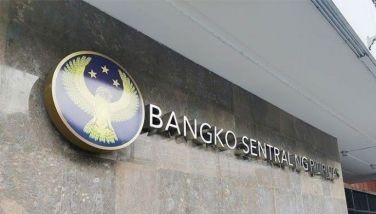Big banks allowed to tap fund buffers
MANILA, Philippines — The Bangko Sentral ng Pilipinas (BSP) has allowed big banks to utilize their capital and liquidity buffers to absorb losses and support financing requirements amid the coronavirus disease 2019 or COVID-19 pandemic.
BSP Deputy Governor Chuchi Fonacier said universal and commercial banks are allowed to use their buffers under the Basel III risk-based capital adequacy and liquidity framework to absorb shocks during periods of stress.
In a memorandum, Fonacier said that a bank that has built up its capital conservation buffer and liquidity coverage ratio (LCR) buffer is allowed to utilize it during the health emergency.
“Owing to the BSP’s adoption of the Basel III risk-based capital and liquidity standards, covered banks are largely seen to have entered the COVID-19 situation in the country with strong capital buffers and ample liquidity position to absorb potential shocks,” she said.
Fonacier pointed out covered banks would be given reasonable time period to restore their Basel III capital provisions and liquidity buffers after the COVID-19 crisis.
According to the regulator, the use of the buffers is in line with the objective of the BSP’s prudential framework so banks are encouraged to act along this principle for purposes of absorbing losses and support the financing requirements of the over all economy.
It said a bank that draws down its 2.5 percent minimum capital conservation buffer would not be considered in breach of the capital adequacy framework.
However, a bank that utilizes its buffer is restricted from making distributions in the form of dividends, profit remittance, in the case of a foreign bank branch, share buybacks, discretionary payments on Tier 1 capital instruments or discretionary bonus payments to staff.
Likewise, Fonacier said a bank could also draw on its stock of liquid assets to meet liquidity demands, even if this may result to the required 100 percent minimum LCR.
She said a covered bank that has recorded a shortfall in the stock of its high-quality liquid assets for three days within a two-week rolling calendar period causing the ratio to fall below the 100 percent requirement should immediately notify the BSP.
The BSP adopted the LCR and net stable funding ratio (NSFR) for big banks in January. The LCR mandates big banks to hold high-quality and easily convertible assets to cover its total net cash outflows for a 30-day period, while the NSFR requires financial institutions to hold enough liquidity or reliable sources of funding to match their expected funding needs for a longer period of one year.
The Basel Committee on Banking Supervision has adopted the Basel III framework prescribing supervisory tools to improve risk management and prevent a repeat of the 2008 global financial crisis.
Fonacier said non-compliance by a covered bank with the minimum risk-based capital adequacy ratios and minimum 100 percent NSFR as a result of the COVID-19 pandemic would be handled on a case-to-case basis by the BSP.
“A covered bank will be provided by the BSP with enough time to address regulatory breaches taking into account a forward-looking assessment of macroeconomic and financial conditions of the system as a whole and their potential impact on the supervised institutions,” Fonacier said.
- Latest
- Trending





























